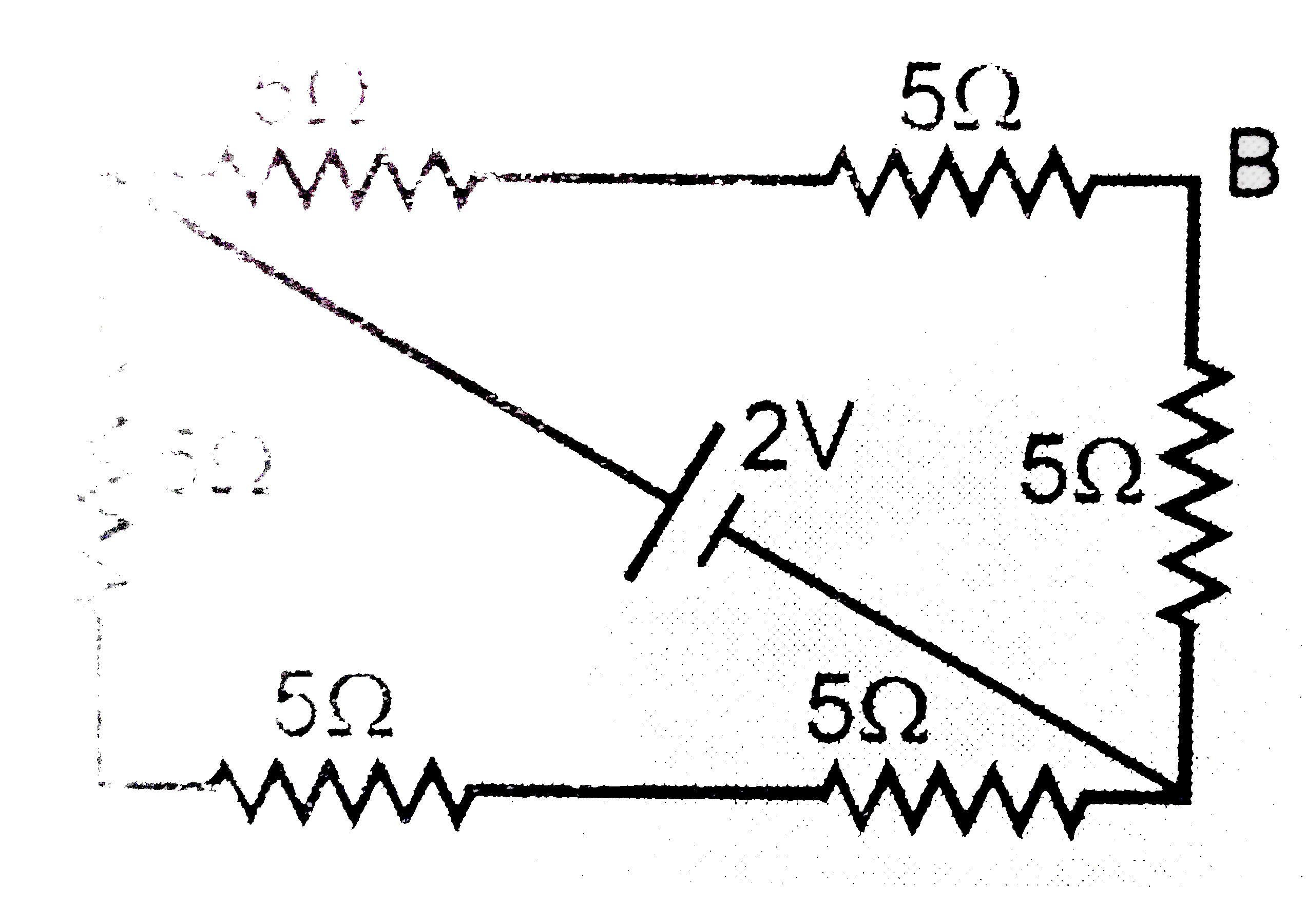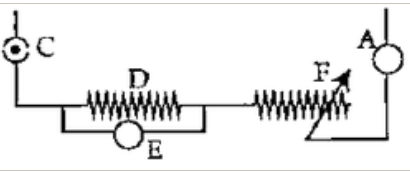A conductor AB is joined to a cell with its end A at a low potential and the end B at a high potential. (a} State the direction of flow of electrons in it. (b) What will be the direction of flow of conventional current in the conductor?
To solve the question step by step, we will analyze the situation described and apply our understanding of electric current and electron flow.
Step 1: Understand the Setup
We have a conductor AB connected to a cell. The end A is at a low potential, and the end B is at a high potential.
Step 2: Determine the Direction of Electron Flow
Electrons are negatively charged particles. They flow from a region of low potential to a region of high potential. In this case:
- End A (low potential) → End B (high potential)
Thus, the direction of flow of electrons in the conductor AB is from A to B.
Step 3: Determine the Direction of Conventional Current Flow
Conventional current is defined as the flow of positive charge. By convention, current flows from a region of high potential to a region of low potential. In this case:
- End B (high potential) → End A (low potential)
Thus, the direction of flow of conventional current in the conductor AB is from B to A.
Final Answers:
(a) The direction of flow of electrons is from A to B.
(b) The direction of flow of conventional current is from B to A.
---
We have a conductor AB connected to a cell. The end A is at a low potential, and the end B is at a high potential.
Electrons are negatively charged particles. They flow from a region of low potential to a region of high potential. In this case:
- End A (low potential) → End B (high potential)
Conventional current is defined as the flow of positive charge. By convention, current flows from a region of high potential to a region of low potential. In this case:
- End B (high potential) → End A (low potential)
(a) The direction of flow of electrons is from A to B.
(b) The direction of flow of conventional current is from B to A.
Topper's Solved these Questions
- BOOK - ICSECHAPTER - CURRENT ELECTRICITYEXERCISE - Exercise-9(A)22videos
CURRENT ELECTRICITY
- BOOK - ICSECHAPTER - CURRENT ELECTRICITYEXERCISE - Exercise-9(A)Multiple choice3videos
CURRENT ELECTRICITY
- BOOK - ICSECHAPTER - ELECTRICITY AND MAGNETISM EXERCISE - TOPIC 2 Magnetism (4 Marks Questions )6videos
ELECTRICITY AND MAGNETISM
Similar Questions
What is the direction of flow of electrons in a galvanic cell?
View SolutionTwo conductors A and B are joined by a copper wire. State the direction of flow of electrons in each of the following cases :
View SolutionThe current flows from A to B as shown in the figure. What is the direction of current in circle?
 View Solution
View SolutionTwo straight long parallel conductors are moved towards each other. A constant current i is flowing through one of them. What is the direction of the current induced in other conductor ? What is the direction of induced current when the conductors are drawn apart.
View SolutionState the direction of the above currents in a conductor, stating which end of the conductor is at high potential.
View SolutionFig. 9.26 below shows two conductors A and B. Their charges and potentials are given in the diagram. State the direction of (i) flow of electrons, and (ii) flow of current, when both the conductors are joined by a metal wire.
 View Solution
View SolutionHow is the direction of flow of current between two charged conductors determined by their potentials ?
View SolutionName and state the law which relates the potential difference and current in a conductor.
View Solutionfind the net current flowing out of the battery and potential at B.
 View Solution
View SolutionIn the electric circuit shown in Fig., label the parts A, B, C, D, E, and E
State the function of each part. Show in the diagram the direction of flow of current.
 View Solution
View Solution

